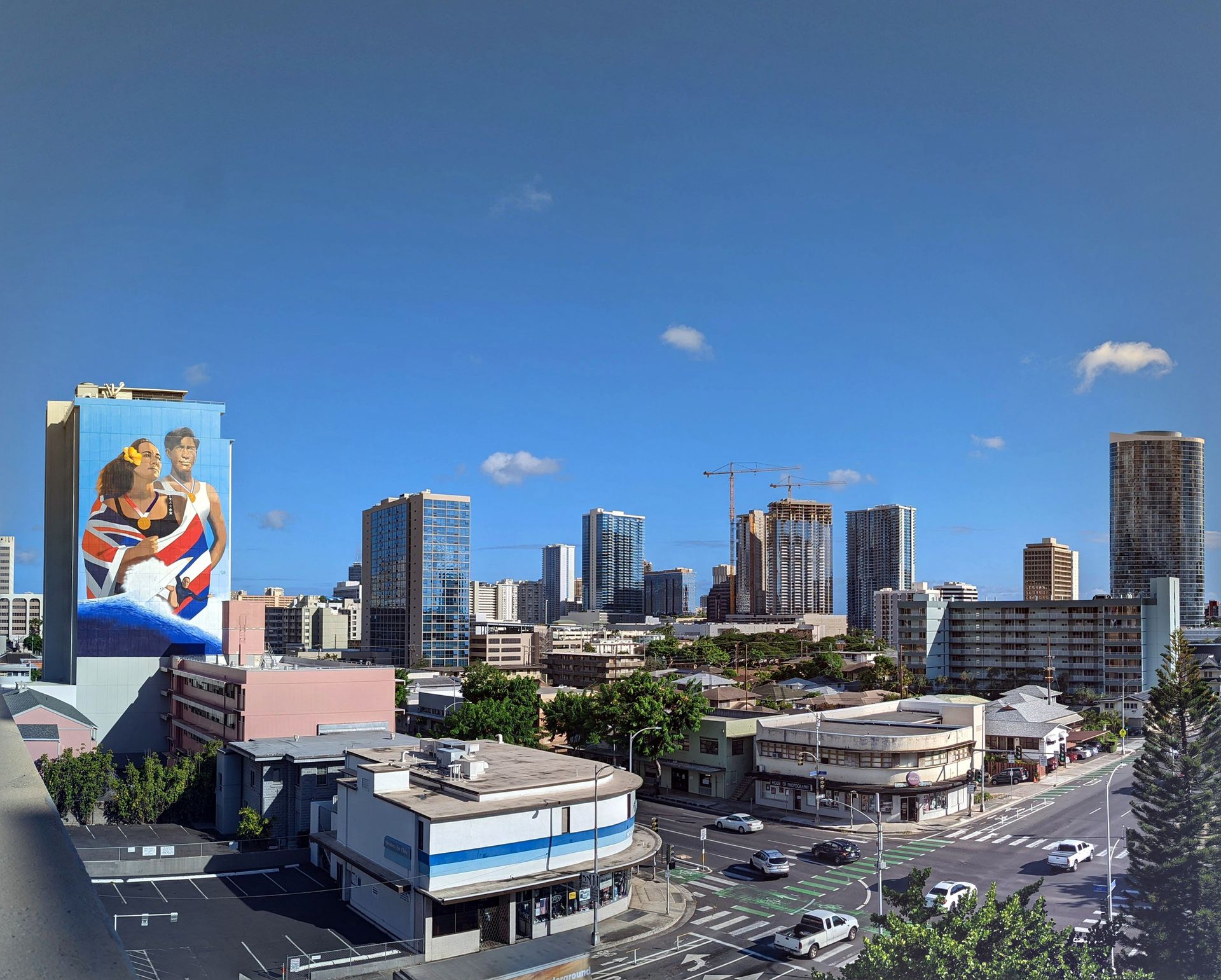
January 2023 Email Update
The December median sales price for single-family homes was $1,049,500 (0.5% lower than December 2021) and for condos was $502,500 (3.6% higher than December 2021). Demand continues to remain drastically lower than 2021 numbers with closed sales dropping 46.6% lower for single-family homes and 39.3% lower for condos and pending sales dropping 47.3% lower for single-family homes and 45.2% lower for condos. The supply of single-family homes almost doubled, and the supply of condos rose 23.7%. There is currently 2.1 months of single-family homes inventory and 2.2 months of condo inventory.
You can review more detailed current and past real estate market data on our website using the link below.
Monthly StatisticsSteep property tax assessments are causing some Oahu property owners to question the values despite evidence that the buoyant real estate market has made their homes that much more valuable. Tim fielded at least five calls from clients who wanted to protest the values but could not because the data failed to support their arguments. Tracey recently spoke with an owner of a leasehold condo whose assessed value rose from $605,600 to $808,600 this past year. Tracey looked at last year’s sales and told the owner that the assessment was below the 10% threshold to protest the value. Tracey further advised the owner that her assessed value was approaching $1,000,000 where the tax rate for “Residential A” property jumps from 0.35% for every dollar to 0.45% up to $999,999 and 1.05% for every dollar at $1 million and above. The letters to the editor at the Honolulu Star Advertiser have been filled with complaints about the assessments. Mayor Rick Blangiardi pointed the finger at rich mainlanders arriving with boatloads of cash driving up prices and briefly mentioned the lack of housing inventory. It apparently does not matter that study after study points to the red tape coming from state and county government contributing most to this “crisis.”
A recent Wall Street Journal article predicted more difficulty in the residential housing market for several reasons on both the sales and rental sides of the market. Mr. Timiraos, the author, argues that the COVID-19 pandemic pulled forward the U.S. household formation growth percentages when more people wanted to live without roommates and more knowledge workers bought homes with room for home offices. Timiraos estimates that normal household growth would have been half of the rate over the past 30 months if the pandemic had not occurred. The housing market will face significant headwinds as a result of people seeking roommates to help pay for soaring rents coupled with the Federal Reserve’s rapid interest rate increases at the end of last year. Mortgage rates have increased from about 4% in March to 6.3% at the end of December after peaking about 7% in October. Fannie Mae economists predict that 2023 existing home sales will be below the average yearly home sales during the real estate bust from 2006 to 2011. The Federal Reserve has raised rates seven times to a target range of 4.25% to 4.5% and economists predict further rate hikes in 2023.
Mayor Rick Blangiardi plans to ask the Honolulu City Council for an additional $33 million in federal funding for additional rent and utility relief as families continue to struggle with higher housing costs and inflation. Blangiardi’s 2023 approach to the lack of affordable housing is heavy on giving money away and light on Oahu’s major driver in the lack of housing and bureaucratic red tape. While he tries to focus on streamlining the Department of Planning and Permitting’s (DPP) operations, he fails to push for eliminating restrictive zoning and permitting procedures that hinder housing development.
Hawaii celebrated the first-born babies of the year and logged another year of people leaving the islands. 7,000 more Hawaii residents left to seek better opportunities and live in areas with a lower cost of living from July 2021 to July 2022.
The Marine Corps will station 15 new refueling aircraft and six MQ-9 Reaper drones in Kaneohe by August 2026. The Marines are in the middle of structural changes aimed at island and coastal warfare in the Pacific Theatre. The additional aircraft will require the demolition of a hanger built in 1941 and construction of a new hanger required to service the new aircraft. The drones are designed to be quiet and stealthy and their operations should not impact the surrounding neighborhoods.
MQ-9 REAPER: The Most Dangerous Military Drone on EarthCongress appropriated and additional $1 billion to shut down the Navy’s Red Hill Fueling Station adding to the $1.1 billion already allocated to the project. No detailed plan or breakdown was available to explain the need for spending $2.2 billion to complete the project in typical federal fashion.
Governor Josh Green announced he will take the lead on eliminating the state’s dysfunctional building regulations that prohibit affordable housing construction. Unfortunately, he did not address the state’s role in hindering housing construction in general, the source of the lack of supply resulting in unaffordable rents and prices. Instead, he has invited the legislature to spend more taxpayer money to build the stock of affordable housing.
Green has reversed David Ige’s decision and restarted the public-private development of the New Aloha Stadium. He would also like to shorten the timeline of the new multi-purpose stadium surrounded by mixed-use real estate development by a year. Green would like the stadium ready before the estimated 2027 completion date. Since Hawaii has recently shown it is unable to complete large projects on time and within a budget, the public-private partnership makes sense. About 70 acres of the 98-acre project would be used for housing, hotels, offices, and retail spaces. The state legislature set aside $350 million for the project via a more traditional state-built contract.
Aloha Stadium: A Lesson in Stadium DesignThe Department of Hawaiian Home Lands (DHHL) has finalized a $600 million project to build 177 apartments and develop 2,727 lots. The plan has been submitted to the state legislature and asked for six bills to eliminate regulations impeding DHHL’s ability to complete the project in three years as required by last year’s law. The plan allocates $540 million to develop the lots and $60 million to build 177 rental apartments.
Waimanalo neighbors have pushed back against DPP’s approval to expand President Obama’s seawall to support the development of an oceanfront compound consisting of three houses and a pool. As part of the granting an exception to existing environmental laws, the Obamas’ friend and developer, Marty Nesbitt, was to replenish the sand in front of neighboring homes. Neighbors have been scrambling to install sand-filled bags dubbed burritos to protect their own lots creating more beach erosion in Waimanalo. Waimanalo’s Kaiona Beach Park’s erosion has exposed large drainage pipes where local families gather and play. Nesbitt argues he should be able to continue building since he has met the “spirit of the agreement” even though neighbors disagree.
A bill introduced by Honolulu City Council member Andrea Tupola would refund permitting fees due to permitting delays at DPP. Building permits are no longer valid after a year and DPP does not notify the applicants that they must pay a new fee to go to the back of the line. DPP currently has 6,000 backlogged permits and three quarters of those permits are residential projects. Many involve small projects like installing solar panels or building a fence. Even Governor David Ige has been waiting several months for a permit to move an interior wall one foot to support his home renovation. Hopefully Governor Josh Green is paying attention.
Failure to maintain Oahu’s fleet has resulted in 84 of the 207 Handi-vans being placed out of service. The Handi-van service, designated for transporting disabled and blind people, currently has a 36% on-time record and riders are often left waiting at desigated areas for hours waiting on their rides resulting in missed appointments. Rides have been cancelled with riders dropped off at unusual locations with no warning. The call centers fail to answer the phones for stranded riders desperate to be picked up. 17% of callers have abandoned their calls due being on hold for hours. The Department of Transportation Services has failed to replace about 40 vans per year and failed to properly maintain the remaining vans in service resulting in increased breakdowns. The vans last about 6 to 7 years on average.
The Mauna Loa eruption that started on November 27th is no longer considered a threat to the highway that crosses the Big Island stopping 1.9 miles from the road. The last fissure has stopped feeding the 12-mile-long lava flow. While the current lava flow is considered over, the eruption was not yet considered dormant and could restart at any time and in any direction. Scientists at the Hawaiian Volcano Observatory later announced that the eruption ended on December 13th. Kilauea started erupting again in the Halemaumau crater on January 4th.
See Mauna Loa Spew Fountains Of LavaThe New Year brought more firework related injuries and more calls from first responders to tighten enforcement. The 37% drop in permits failed to predict the increased aerial pyrotechnic activity on Oahu and corresponding increase in firework related injuries requiring hospitalization. The Honolulu Advertiser placed a front-page photo of smoke over Honolulu Harbor reminding Tim and Tracey of the New Year’s Eve nights driving home from Tracey’s parents’ house at 10 miles-per-hour due to the smoke that limited visibility to a few feet. The smoke caused people with difficulty breathing to call for help and contributed to 11 traffic accidents. It appears Honolulu revelers have fully emerged from their pandemic slumber.
A Hawaiian airlines flight from Phoenix to Honolulu highlighted the wisdom in wearing seatbelts even when the seatbelt sign has turned off. Unexpected turbulence landed 20 passengers in the hospital, 11 seriously injured during the “mass casualty emergency.” The Honolulu Star Advertiser provided photos of the cabin showing holes in the ceiling panels caused by passengers slamming into the ceiling when the plane dipped suddenly. Fortunately, no one was killed. Six-time Grammy award nominee, Amy Hanaiali’i performed on Tim and Tracey’s Hawaiian Airlines flight from Kauai while waiting three hours on the tarmac on the same day to get home. She was so gracious to help pass the time and it was a treat for all.
A controversial federal fishing permit for cultural practices was approved for the national conservatory monument, Papahanaumokuakea. The permit allows native Hawaiian people to conduct cultural fishing operations in the monument and recoup up to $15,000 in costs through “customary exchange,” or selling their fish. Opponents question the permits since native Hawaiians did not fish in the areas prior to the monument’s establishment. Cultural practices included fishing from the shore, not 130 miles from Kauai and 280 miles from Oahu. The chair of the monument’s Reserve Advisory Council argued, “why are you going to go up there when you have fish available right off your shoreline?” The council does not expect NOAA to accept the recommendation since the goals are inconsistent with the goals of the sanctuary.
Hawaii researchers tagged a nine-foot tiger shark that sent back thousands of reports on the shark’s location and ocean temperatures. The shark swam in depths of more than 1,600 feet and in waters ranging from 50 to 80 degrees Fahrenheit. The trial provides proof that data can be collected below the surface where satellites are unable to measure. Researchers hope the additional data will better guide conservation efforts.
A study published December 22nd provides strong evidence the magma chambers of Mauna Loa and Kilauea are connected deep underground. The theory explains why both Mauna Loa and Kilauea eruptions ended about the same time. The pancake like structures at depths of 10 to 100 kilometers, called sills, channel magma both laterally and upward supplying the two volcanic chambers.
The U.S. Fish and Wildlife Service announced that 275,000 acres on Kauai, Maui, and the Big Island will be designated critical habitat for the iiwi, the most threatened of the Hawaii honeycreepers. An estimated 600,000 of the red birds with curved beaks and black wings live on the Big Island (90%), Maui (9%), and Kauai (1%). The designation of land is in response to a lawsuit by the Center of Biological Diversity.





